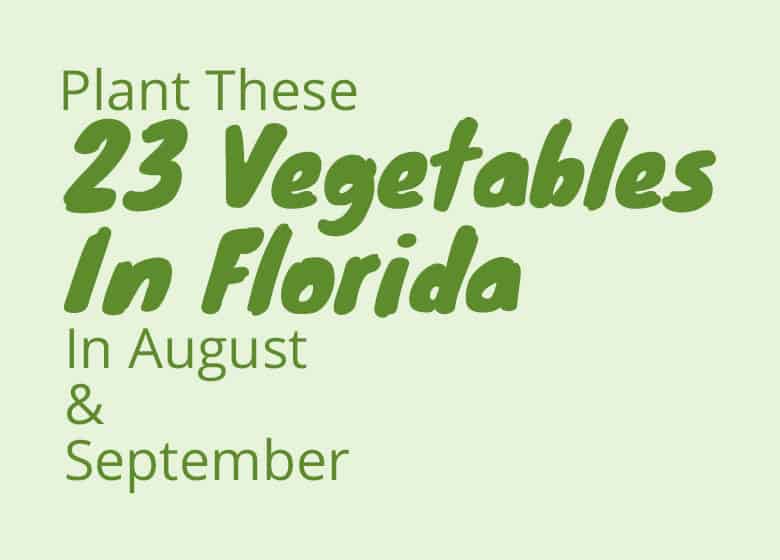
August and September are busy months for Vegetable gardeners in Florida, there are a lot of vegetables that you can plant.
| North Florida | Central Florida | South Florida |
| Arugula | Arugula | Beans |
| Beans | Beans | Cabbage |
| Beets | Beets | Carrots |
| Brocolli | Broccoli | Cauliflower |
| Brussels Sprouts | Brussels Sprouts | Collards |
| Cabbage | Cabbage | Cucumbers |
| Carrots | Carrots | Eggplant |
| Cauliflower | Cauliflower | Kale |
| Celery | Celery | Lettuce |
| Collards | Collards | Mustard |
| Cucumbers | Cucumbers | Okra |
| Eggplant | Eggplant | Onions |
| Kale | Kale | Peas |
| Kohlrabi | Lettuce | Peppers |
| Lettuce | Mustard | Pumpkin |
| Mustard | Onions | Squash |
| Peppers | Peppers | Swiss Chard |
| Radish | Radish | Tomatoes |
| Spinach | Spinach | Turnips |
| Squash | Squash | |
| Swiss Chard | Swiss Chard | |
| Tomatoes | Tomatoes | |
| Turnips | Turnips |
South Florida has fewer vegetables that they can plant at this time than north and central Florida. The south Florida climate is a bit more tropical than the rest of the state which makes their timing slightly different.
Read on to find Florida friendly varieties of each vegetable and some basic care instructions that will hopefully help those of you who are brand new to vegetable gardening in Florida.
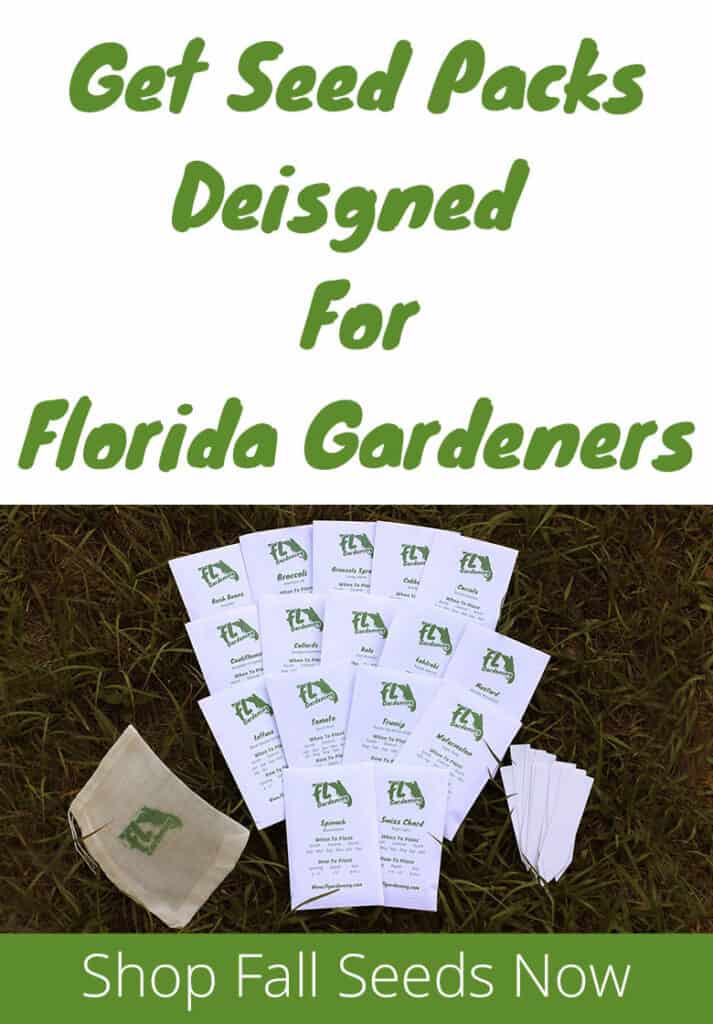
Vegetables To Plant In September In Florida
Arugula
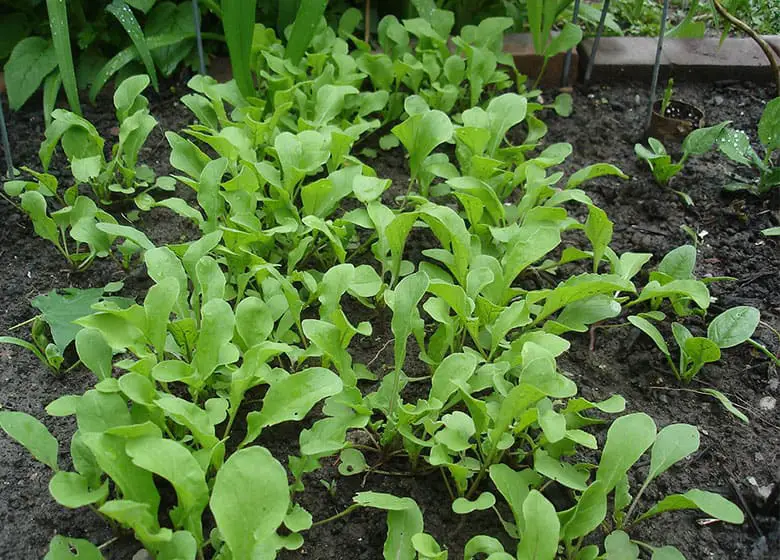
Florida Friendly Arugula Varieties: Astro, Speedy
Plant seeds multiple times in a season, 2 weeks apart. This will allow for a steady harvest. Harvest the lowest leaves first or the whole plant when it’s about 10 inches tall.
Beans
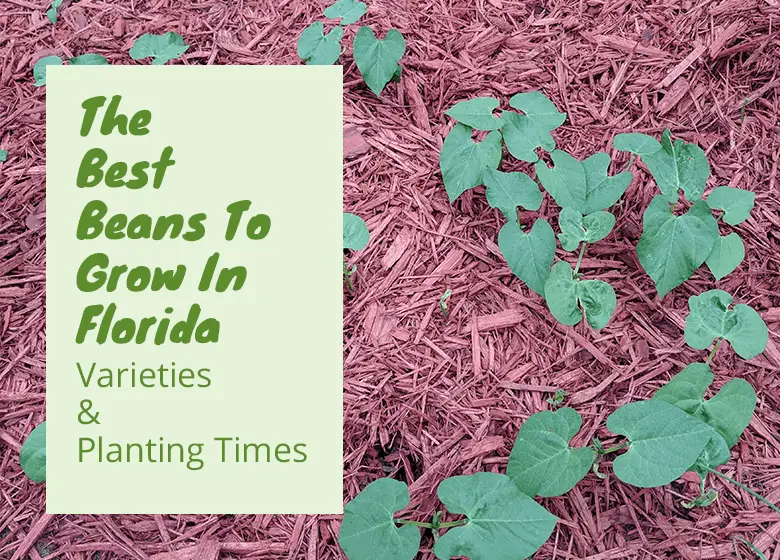
Florida Friendly Bean Varieties:
Bush Beans: Bush Blue Lake, Contender, Cherokee Wax, Provider
Pole Beans: Blue Lake, Kentucky Wonder, McCaslan
Beans are a super easy and satisfying food to grow. The seeds are large, they sprout and grow fast, they provide a big harvest and you really don’t need to worry about fertilizing them. Too much fertilizer (nitrogen to be specific) will reduce the number of beans your plant will produce.
Beets
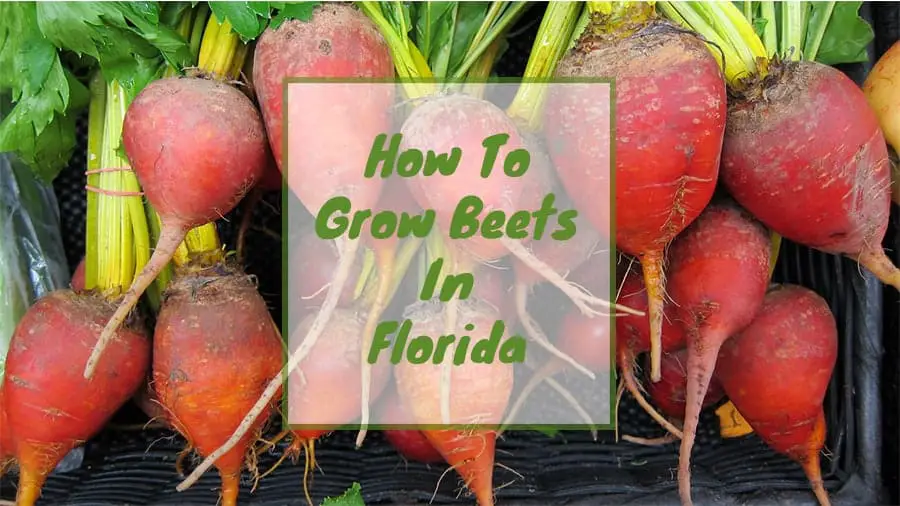
Florida Friendly Beet Varieties: Early Wonder Tall Top, Detroit Dark Red, Cylindra, Red Ace, Golden Detroit, Baby Ball, Chioggia, Long Season Lutz
Beets are pretty tolerant of our mild winters and they grow super fast. That makes them a really fun vegetable to grow. It’s best to plant seeds directly into the ground.
Some of the different varieties provide visually appealing roots. Beets are a great vegetable to grow because you can also eat the leaves too.
Brocolli
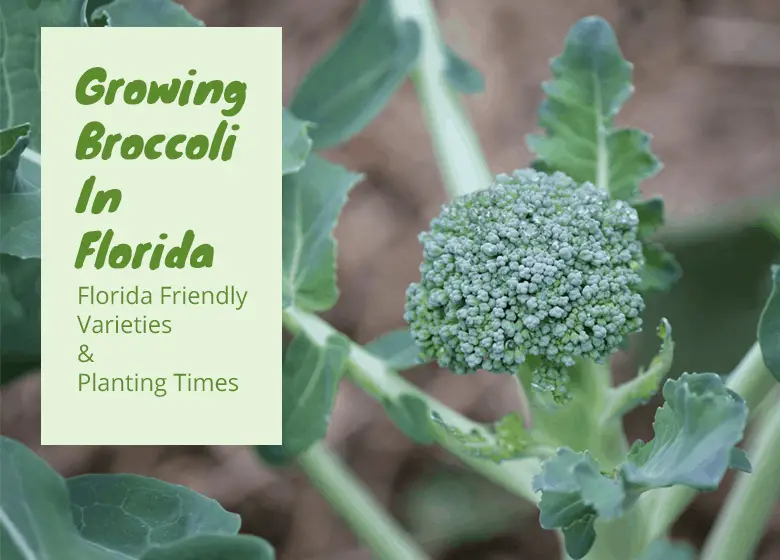
Florida Friendly Broccoli Varieties: Calabrese, De Cicco, Early Dividend, Early Green, Packman, Waltham
Broccoli usually takes about 80 – 100 days until it’s ready for harvest. After harvesting the main head of broccoli you will get plenty more little broccoli heads that sprout off the sides.
Brussels Sprouts
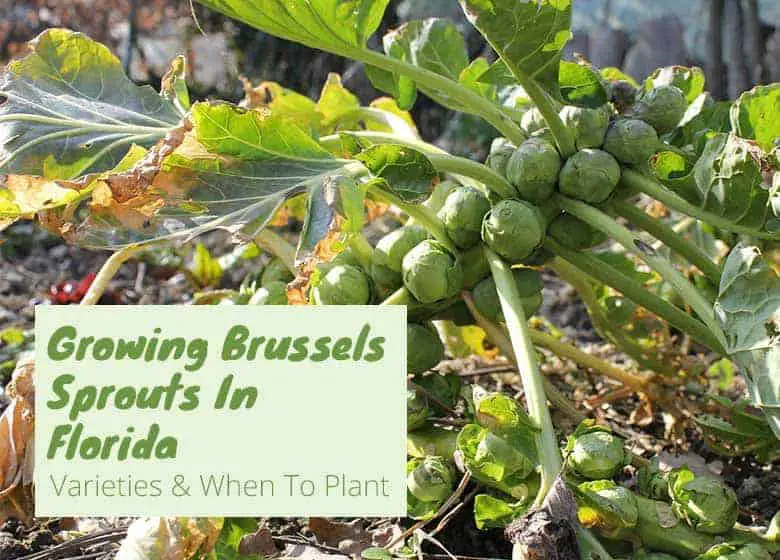
Florida Friendly Brussels Sprouts Varieties: Jade Cross, Long Island Improved
This plant is not included on south Florida’s list because this is a true cool-season crop. You need temperatures around 60°F in order to grow these guys well. I’ve had bad luck growing them in central Florida. I know it can be done, but those in the north will have the best luck when it comes to growing Brussels.
Cabbage
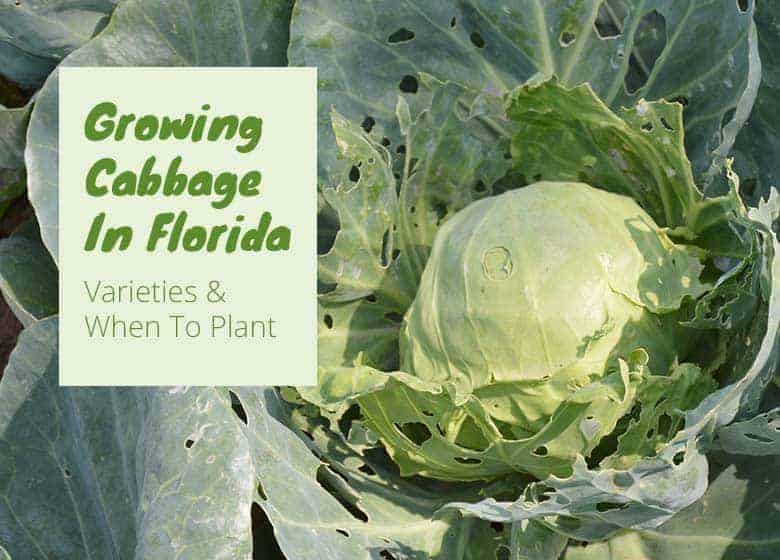
Florida Friendly Cabbage Varieties: Copenhagen Market, Flat Dutch, Red Acre, Rio Verde, Round Dutch, Savoy, Wakefield
I’ve found cabbage to be really easy to grow in central Florida, I’ve only ever grown the red acre variety but there you have tons of choice to choose from when it comes to growing cabbage in Florida.
Carrots
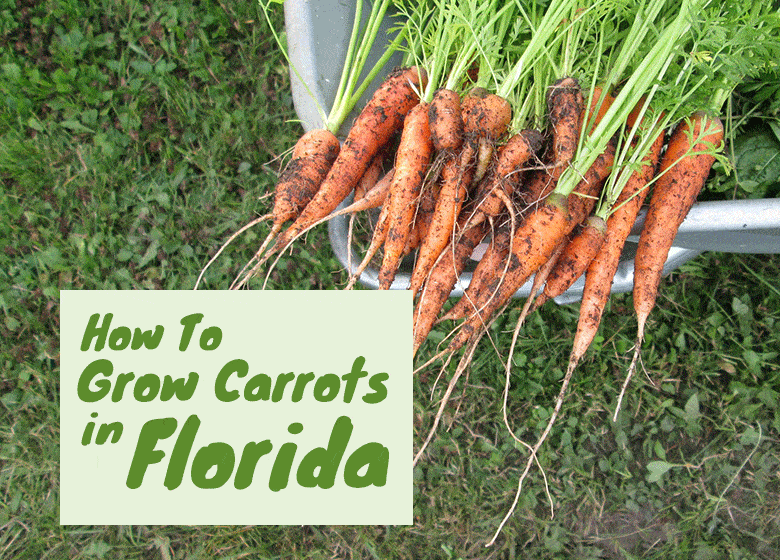
Florida Friendly Carrot Varieties: Chantenay, Danvers, Imperator, Nantes
The most difficult part about growing carrots is getting the seeds to start. The seeds are very tiny and must stay consistently moist.
They also need to basically be planted on top of the soil. Because of this they can be easily blown away or dry out. If you can keep the seeds moist until they sprout you should be on easy street. I’ve found that the carrots that I do get to sprout are relatively easy to care for.
Cauliflower
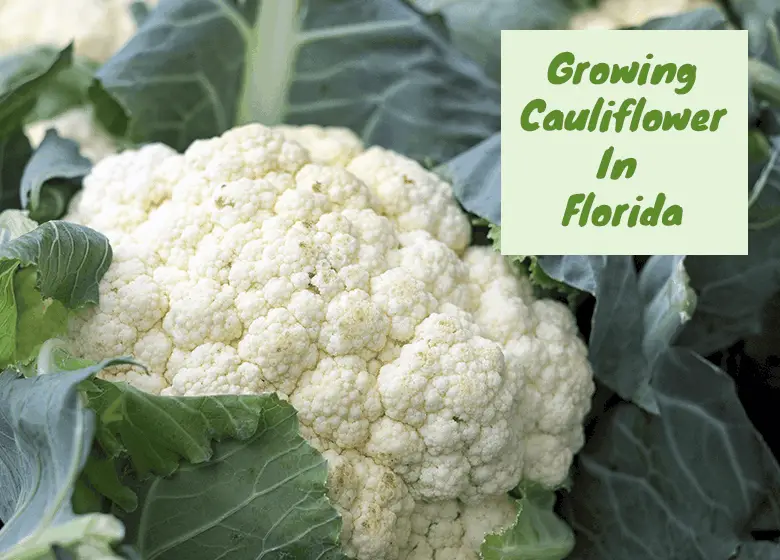
Florida Friendly Cauliflower Varieties: Brocoverde, Cheddar, Graffiti, Snowball Strains, Snow Crown, Verdi
Cauliflower is a bit picky, or at least that’s been my experience with it. The plants themselves can take a nice frosty night, however if you have a head of cauliflower on the plant you will most likely lose your harvest to a frost.
There are some pretty funky varieties that you can choose from. Cauliflower doesn’t just come in white. You can grow a crazy looking purple kind, and an alien-looking yellow cone-shaped kind!
Celery
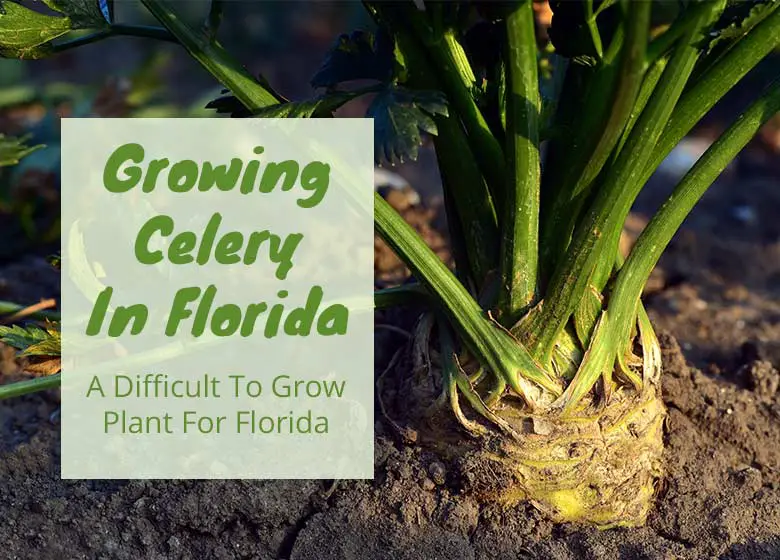
Florida Friendly Celery Varieties: Conquistador, Giant Pascal, Golden Pascal, Giant Red
Celery is somewhat difficult to grow in Florida. Celery needs steady, moderate conditions (weather around 70°F) in order to thrive. As you know, Florida doesn’t really offer these types of conditions for a steady period of time.
To have a shot at growing celery in Florida we must choose fast-maturing varieties. From the list above conquistador and Giant red are the quickest to mature and will probably be your best shot.
Collards
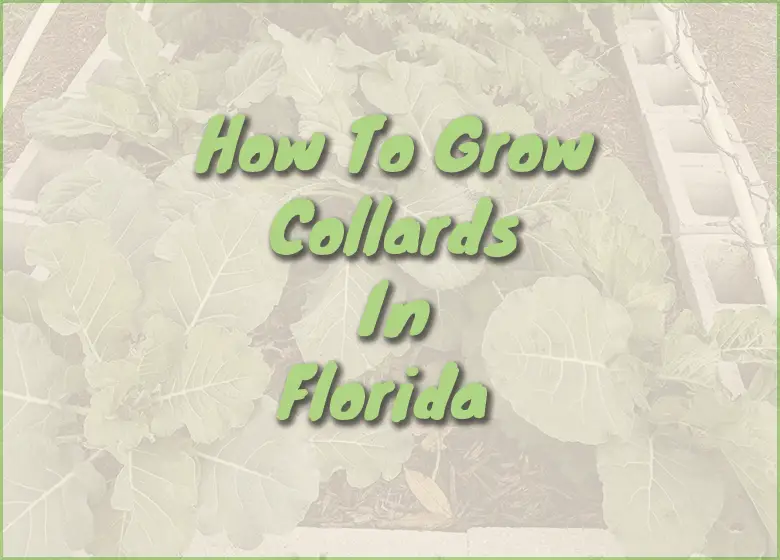
Florida Friendly Collard Varieties: Georgia Southen, Top Bunch, Vates
I love to grow collards for two main reasons. One, they are super easy and two, I will eat the heck out of them!
The best time to plant this vegetable in Florida is in August and September, however, they are such a tough plant, you can almost grow them year-round. The warmer weather will make the leaves more bitter, which is why the fall time makes the ideal time to plant.
Cucumbers
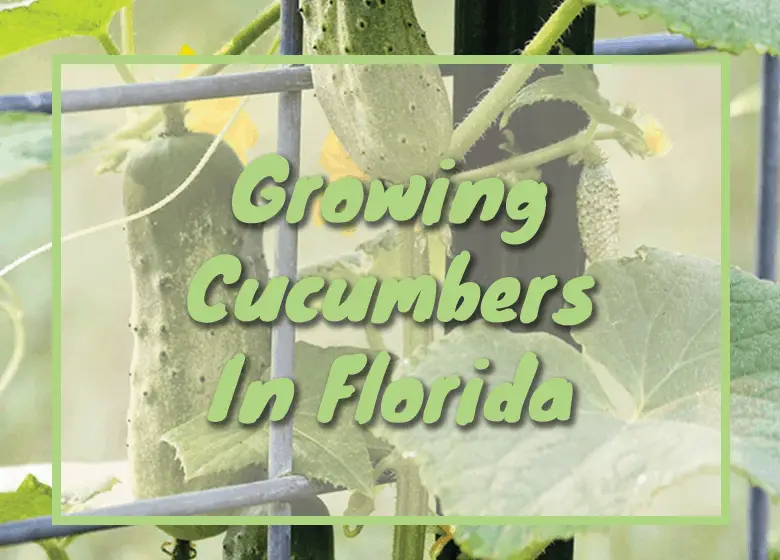
Florida Friendly Cucumber Varieties: Ashley, Boston Pickling, Eureka, Market More 76, Poinsett, Space Master, Straight Eight
Cucumbers can be grown as a bush or as a vine, choose the best variety that suits your needs. Bushing types usually do better in smaller spaces, vine types need more space to sprawl out.
There are also types that are better for pickling, so think about what you want to do with your cucumbers before choosing a variety.
Eggplant
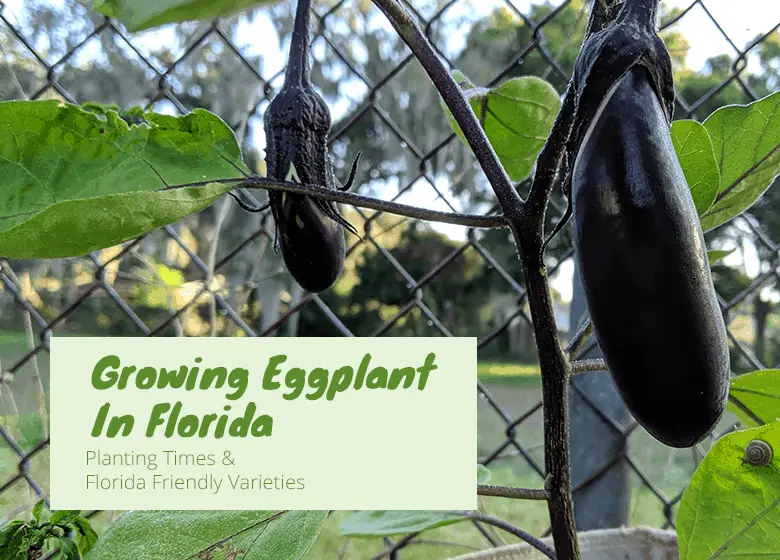
Florida Friendly Eggplant Varieties: Black Beauty, Casper, Cloud Nine, Dusky, Ichiban, Long
South Floridians will have great luck with eggplant this time of year. It’s best to plant this vegetable in August in Florida. It likes warmer weather and the earlier you get this in the ground the better. You can also plant eggplant in early spring as well.
The biggest problem I faced with my eggplants were snails. They were everywhere! they also attacked my hop plants.
Kale
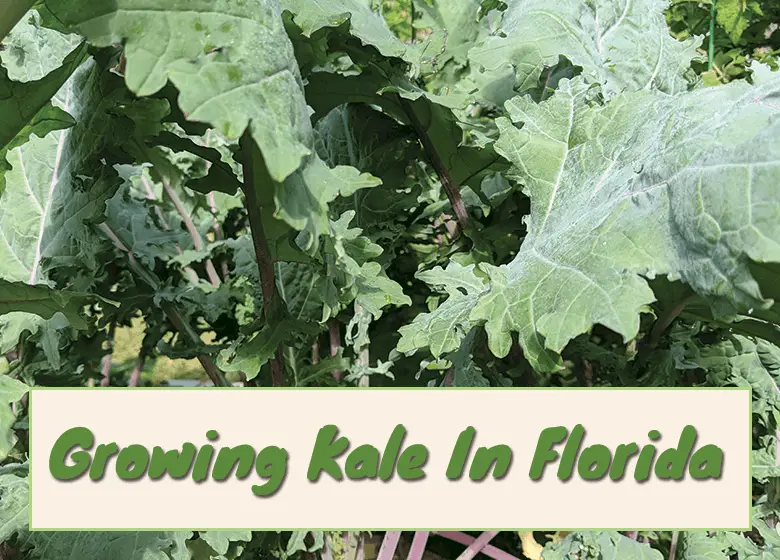
Florida Friendly Kale Varieties: Redbot, Tuscan, Vates Dwarf Blue Curled, Winterbor
Kale is another plant that I truly love to grow. I get so much use out of it, I love to eat kale. It’s really good when lightly steamed with onions and fresh garlic. Toss that in some Italian dressing and you’re good to go!
My favorite variety is the Red Russian, I like the purple stalks and large deep green leaves.
Kohlrabi
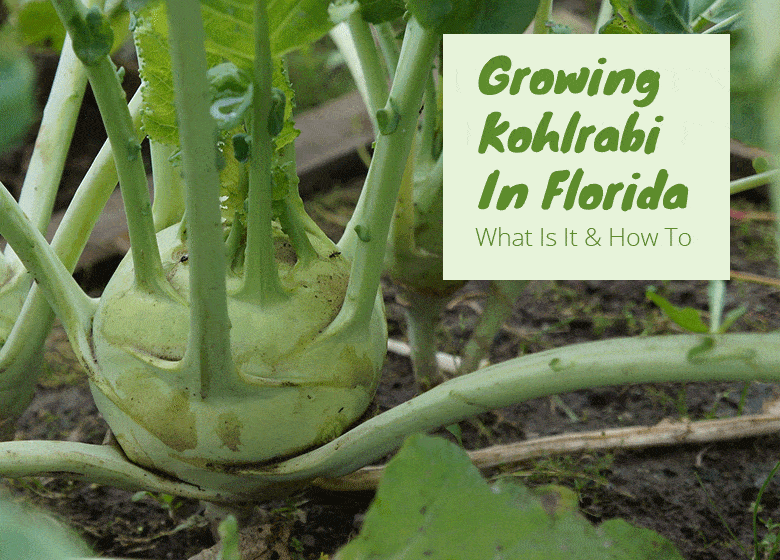
Florida Friendly Kohlrabi Varieties: Early White Vienna, Early Purple Vienna, Grand Duke, Kolibri
A quick-growing plant that looks like a weird, cute alien. Kohlrabi can be green or a really vibrant purple color. Plants are ready for harvest in about 2 months.
This vegetable is a no go for south Florida gardeners at this time of year.
Lettuce
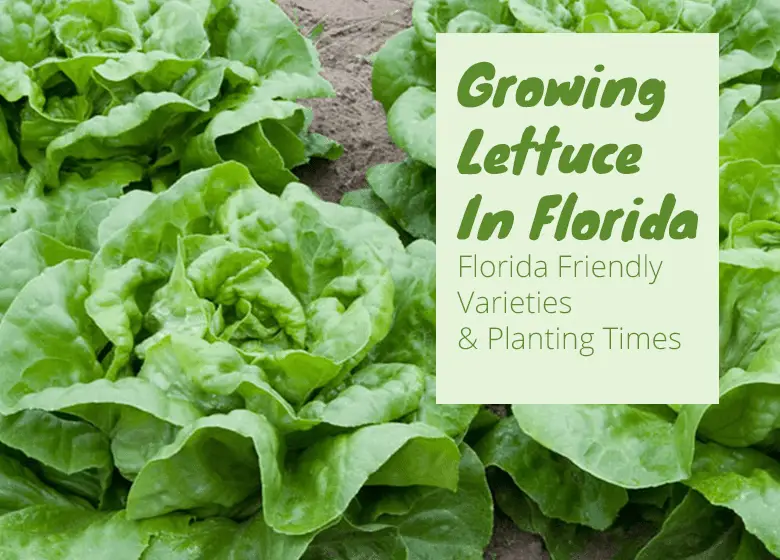
Florida Friendly Lettuce Varieties: Bibb, Buttercrunch, Ermosa, Great Lakes, New Red Fire, Oak Leaf, Outredgeous, Parris Island Cos, Red Sail, Royal Oak, Salad Bowl, Simpson, Tom Thumb
There are a few different kinds of lettuce that yo can grow. Bibb, Crisphead, Romain, and leaf lettuce are the different choices ytou have.
Lettuce matures fast and it’s a good idea to plant multiple times throughout the season a few weeks apart. This will give you a steady harvest.
Mustard
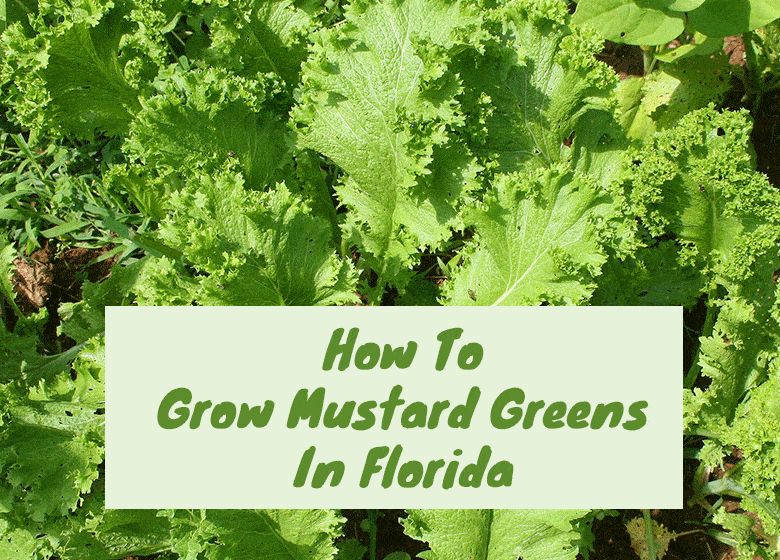
Florida Friendly Mustard Varieties: Florida Broadleaf, Giant Red, Green Wave, Mizuna, Southern Giant curled, Tendergreen
If you’re looking for a really, super, super-super, easy vegetable to grow, look no further. Mustard greens grow almost any place in Florida and pretty much year-round.
Florida broadleaf is the most popular variety and you can expect to begin harvesting in about 45 days.
Okra
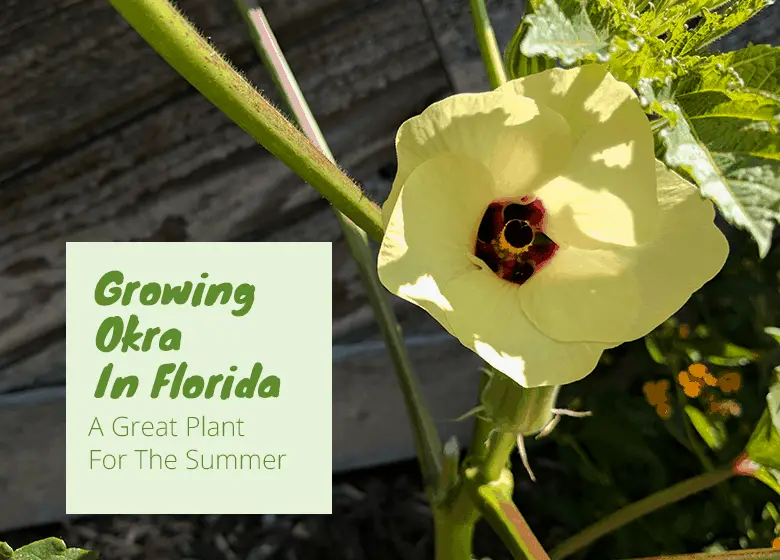
Florida Friendly Okra Varieties: Annie Oakley II Cajun Delight, Clemson spineless, Emerald
This one is specifically for those in south Florida. Okra loves the heat. If you live in central or north Florida you are better off planting okra in spring. You can even grow okra in the summer.
The best variety to grow is Clemson Spineless. Other varieties of okra have really aggressive spine on them, making them difficult to handle. The Clemson spineless variety is spine free.
Onions
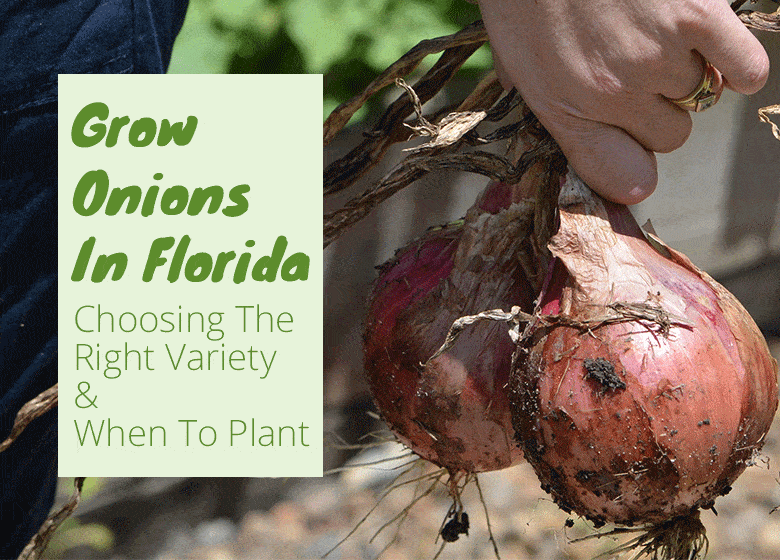
Florida Friendly Onion Varieties: American Flag, Evergreen Bunching, Granex, Shallots, White Libson Bunching
There are a few different types of onions that we can grow. Standard bulbing onions like vadalia, but we can also grow green onions that look similar to shallots.
In north Florida, you can plant both types at this time. If you live in central and south Florida, you can plant the green type onions now. To plant bulbing onions you need to wait until October. They prefer chillier weather.
Peas
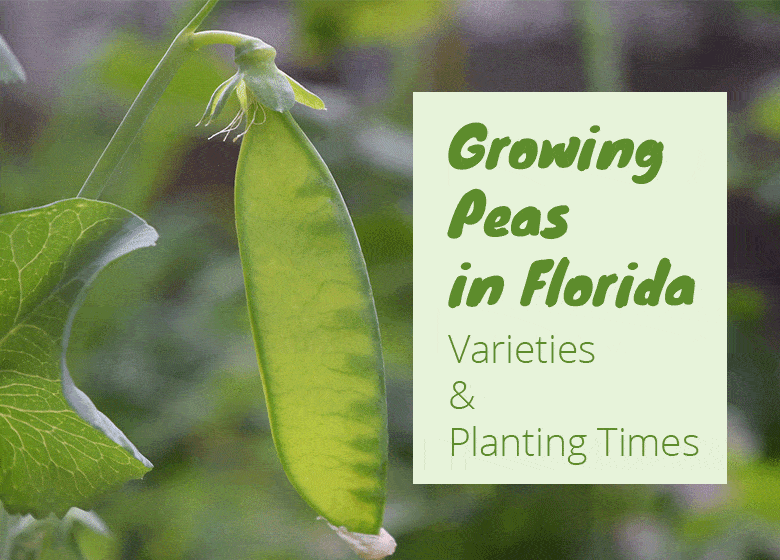
Florida Friendly Pea Varieties: California Blackeye No.5, Green Arrow, Oregon Sugarpod II, Pinkeye Purple Hull, Sugar Snap, Texas Cream, Wando
There are two different types of peas. English, which is your traditional green pea, and then Southern, which is more like a bean. For southern peas think of black-eyed peas.
August is the absolute latest month that you would want to plant southern peas in north Florida. And you would not want to plant english peas at this time if you live in north Florida either. Central and south Florida are good too on both English and southern peas at this time.
Peppers
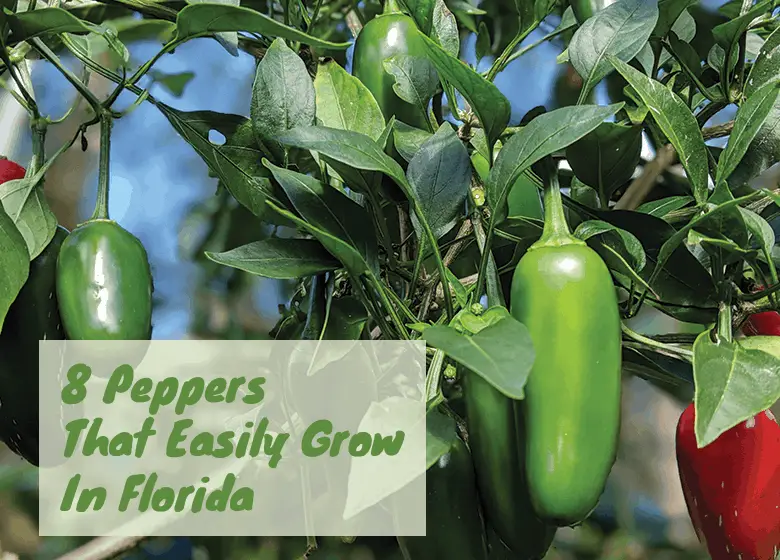
Florida friendly pepper varieties: Anaheim Chile, Ancho, Big Bertha, Big Chile II, California Wonder, Caribbean Red Habanero, Cherry Bomb, Cubanelle, Early Jalapeno, Giant Marconi, Habanero, Hungarian Hot Wax, Jalapeno M, Long Cayenne, Mariachi, Numex, Red Knight, Sweet Banana
As you can see there are a ton of peppers that we can grow in Florida. Peppers love the heat, its best to start these guys early on in September to give them a good head start to withstand any chilly night that will roll in around December and January. You can also plant peppers in early spring.
Pumpkin
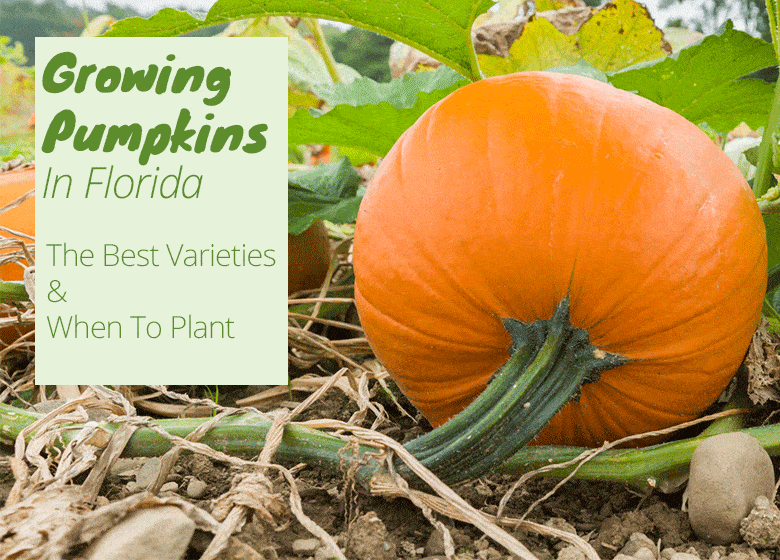
Florida Friendly Pumpkin Varieties: Cinderella, Cheese, Jack Be Little, Kentucky Field, Munchkin, Seminole Pumpkin, Small Sugar, Spookie, Winter Luxury
The easiest pumpkin to grow in Florida is the Seminole pumpkin. It’s said to be native to the area and grown by the native Americans.
Pumpkins are large growing plants requiring anywhere from 6′ to 20′ of space. I’ve seen some really huge pumpkin plants.
At this time of year, the only ones who can plant these in Florida are south Florida gardeners. In central and north Florida it’s better to plant pumpkins in mid-July.
Radish
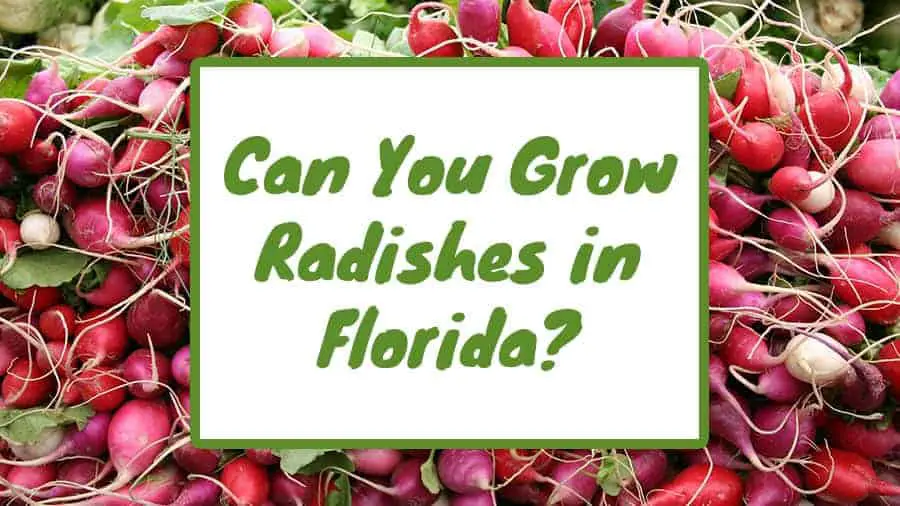
Florida Friendly Radish Varieties: Cherry Belle, Champion Daikon, Sparkler, White Icicle
Radishes are fast-maturing vegetables, usually ready for harvest 30-45 days after planting.
If you live in South Florida you will have to wait a little bit longer to plant this vegetable. For you, the best time to plant these vegetables is in October.
Spinach
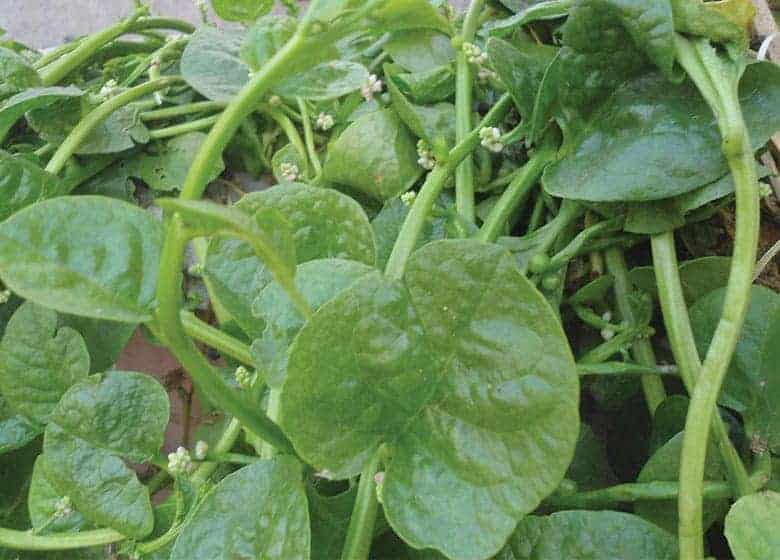
Florida Friendly Spinach Varieties: Bloomsdale Longstanding, Malabar Spinach, Melody 3, Space, Tyee
Spinach is a cool-weather crop. Those in South Florida will have to wait until October to plant a traditional type of spinach.
Malabar Spinach is a bit of an exception. Malabar spinach can be grown in warm weather and can be planted in September in all parts of the state.
Squash
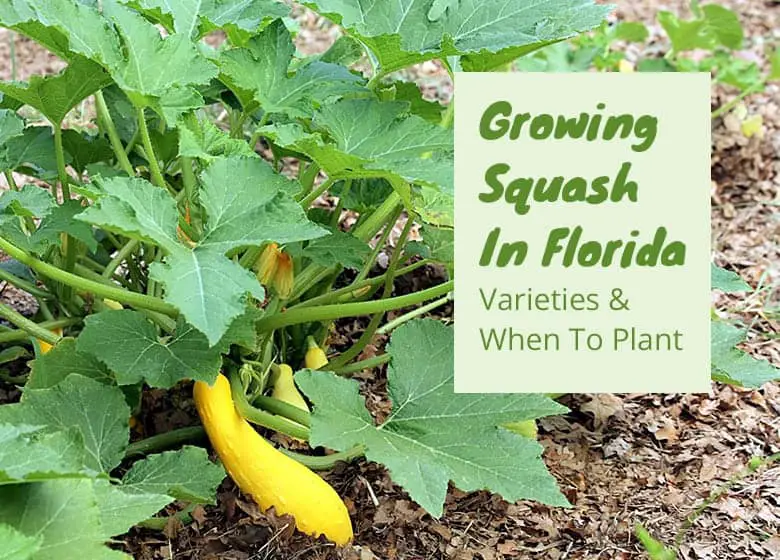
Florida Friendly Squash Varieties:
Summer Squash: Chayote, Early Prolific, Early White scallop, Straightneck, Summer Crookneck
Winter Squash: Early Butternut, Spaghetti, Seminole Squash, Table Ace, Table King, Waltham
Zucchini: Black Beauty, Calabazza, Cocozelle, Spineless Beauty
Winter squash usually grows like a vine and requires large spaces. Summer squash usually grows like a bush. Both types of plants can grow quite large.
The biggest trouble I’ve had while growing squash is mildew. Cool wet nights promote the growth and you are bound to have those conditions around this time in Florida.
Swiss Chard
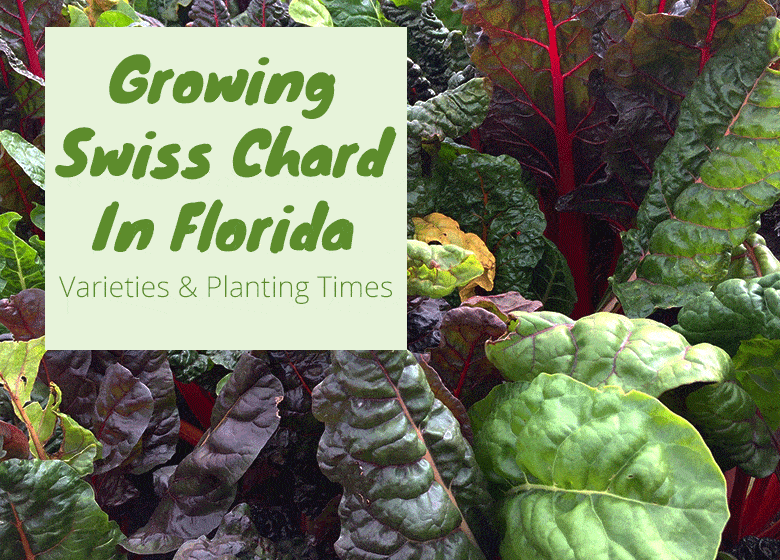
Florida Friendly Swiss Chard Varieties: Bright Lights, Bright Yellow, Fordhook Giant, Lucullus, Red Ruby.
In north Florida, you can plant these guys directly into the ground at this time. In central and south Florida I think its best to start transplants at this time.
Swiss chard is a very eye-catching crop and it will add nice color and texture to your garden.
Tomatoes
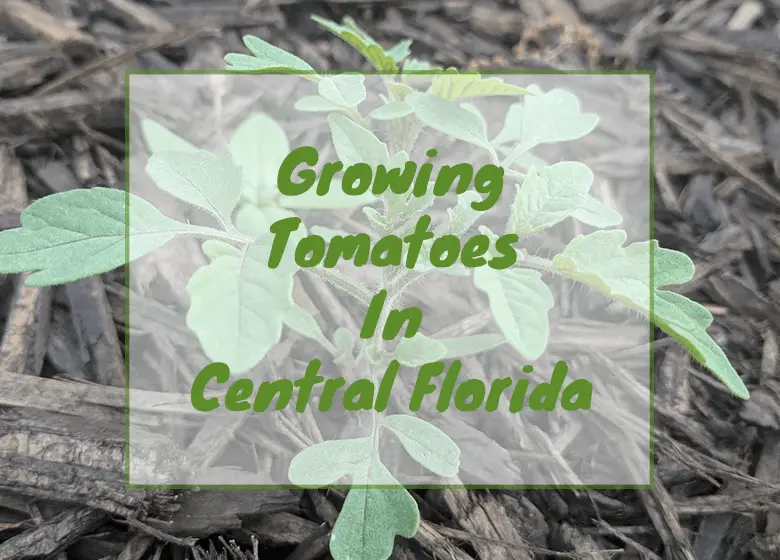
Florida Friendly Tomato Varieties:
Determinate: Celebrity, Flora gold, Tasti -Lee
Indeterminate: Better Boy, Bonnie’s Best, Everglades, Husky Cherry, Solid Gold, Striped Cavern, Sweet 100, Sweet Chelsea
A determinate type tomato is one that will grow to a set size. An indeterminate tomato is one the will just keep on growing and sprawling everywhere. If you are dealing with smaller spaces, such as a patio, a determinate type tomato is a smart choice.
The easiest tomato that I have ever grown is the everglades tomato. It is an indeterminate type and will grow wild, so be sure you have space. It makes a ton of small dime-sized tomatoes that are super sweet.
Turnips
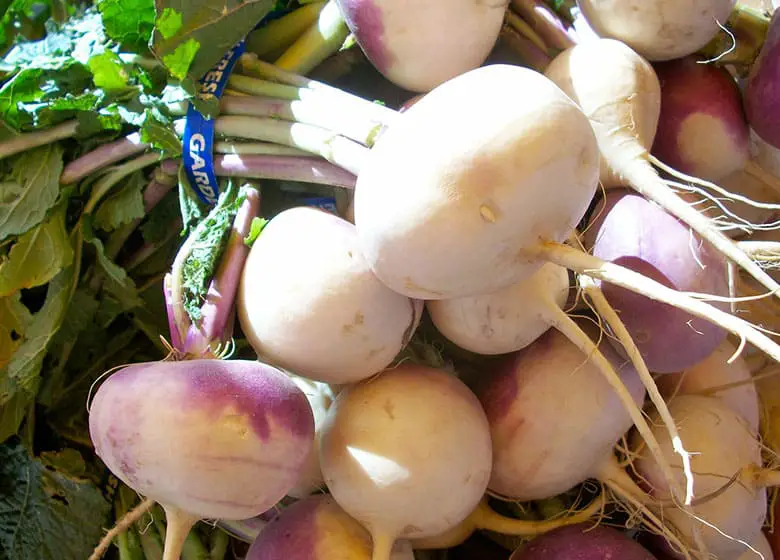
Florida Friendly Turnip Varieties: Purple Top White Globe, Seven Top, Shogoin
All parts of the state can get these in the ground in the beginning of September. Turnips are fast-growing and are ready for harvest in about 45 days or so.
You can eat both the root and the green leaves.
Basic Vegetable Care
All of the vegetables on this list will require a few basic things in order to thrive. They will need to be planted in full sun. This means at least 8 hours of direct sunlight. If they are not given enough sunlight they will be weak plants.
All of the plants listed will benefit from good soil. Some plants, like mustard, will still grow in our natural soil, but they will certainly love a little boost to their dirt.
Whenever I plant I like to add a mixture that looks something like this:
- 40% Peat moss
- 40% Compost
- 20% perlite
- Worm castings
- Mykos
You can use coco coir instead of peat moss if you want. Peat moss has some questionable farming practices but it is cheaper than coco coir. Peat moss is also easier to find at any local hardware store. But if you want to order cooc coir you can on Amazon.
Vegetables also need a steady supply of water. Be sure to water them daily. I’ve found the easiest and best way to water a garden is by drip irrigation. Simply laying out a drip hose in my garden bed uses water more efficiently and it doesn’t allow plants leaves to get wet, which promotes disease and fungi.
Fertilizing Vegetables
A good understanding of what Nitrogen, phosphorus, and potassium do for your plant will help you choose the right fertilizer for the job.
Nitrogen (N) – Helps your plant develope green leafy growth
Phosphorus (P) – Helps your plant develope flowers and fruit
Potassium (K) – A good overall health booster, promoting healthy root growth
So if you were growing things like Collards, Kale or spinach you would want a fertilizer that is high in nitrogen.
If you are growing something like Eggplant or tomatoes you would want something with a little bit more phosphorus in order to promote healthy flower and fruit production.
For my leafy green plants, I use liquid Kelp fertilizer. It’s easy to use, I just spray it on my plants once a week and it’s reasonably priced and you can get it from Amazon or your local hardware store pretty easily.
For fruit-producing vegetables, I usually use Jobe’s organic fertilizer. It’s a 2-5-3, but anything similar will get the job done.
Common Florida Vegetable Pests & Diseases
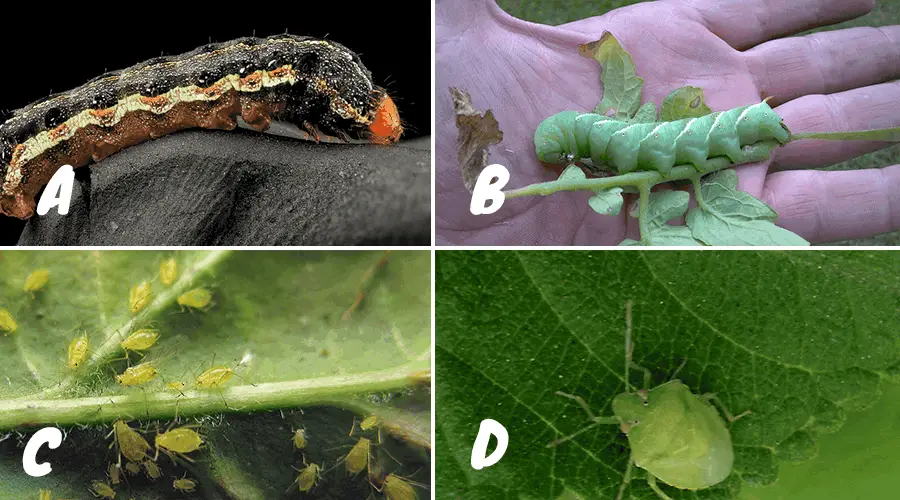
By Adityamadhav83 – Own work, CC BY-SA 3.0, https://commons.wikimedia.org/w/index.php?curid=26420202
The most common pests that I’ve had to deal with are Aphids, Stinkbugs and different kinds of worms.
The tomato hornworm is the top right worm in this picture and they will eat your tomatoes bare. Any kind of caterpillar or worm is easily dealt with by either hand removal or by a spray of B.t., an organic caterpillar control.
I’ve also dealt with a few common diseases and bacterial problems as well. Downy and powdery mildew are common on cucumbers and squash. And Tomato leaf spot is a common problem as well. Things of this nature are best handled with a spray of a liquid copper fungicide and removal of infected leaves.
Growing Vegetables In September and August In Florida
September and August are busy months for Florida vegetable gardeners. There are a bunch of plants that we can plant during this time of year.
Be sure to plant Florida friendly varieties and take the basic care steps necessary in order to have a productive garden. If you want any more vegetable specific information be sure to click on the photos underneath that vegetable header. If I have a detailed article about it I will have linked it to that photo.
If you want to read more about my personal experiences that I’ve had with gardening and are looking for a more in-depth guide to growing vegetables in Florida check this article out.

